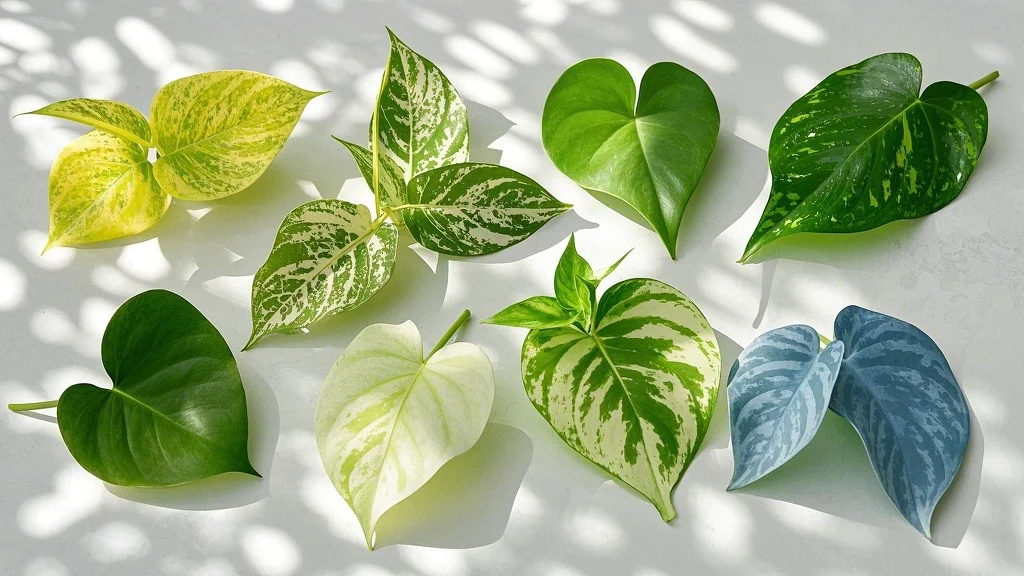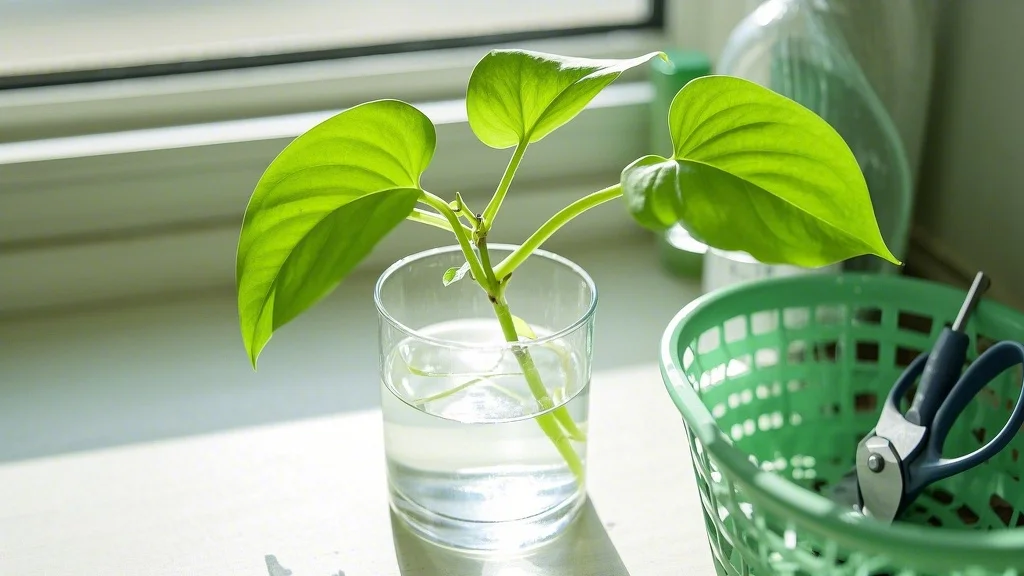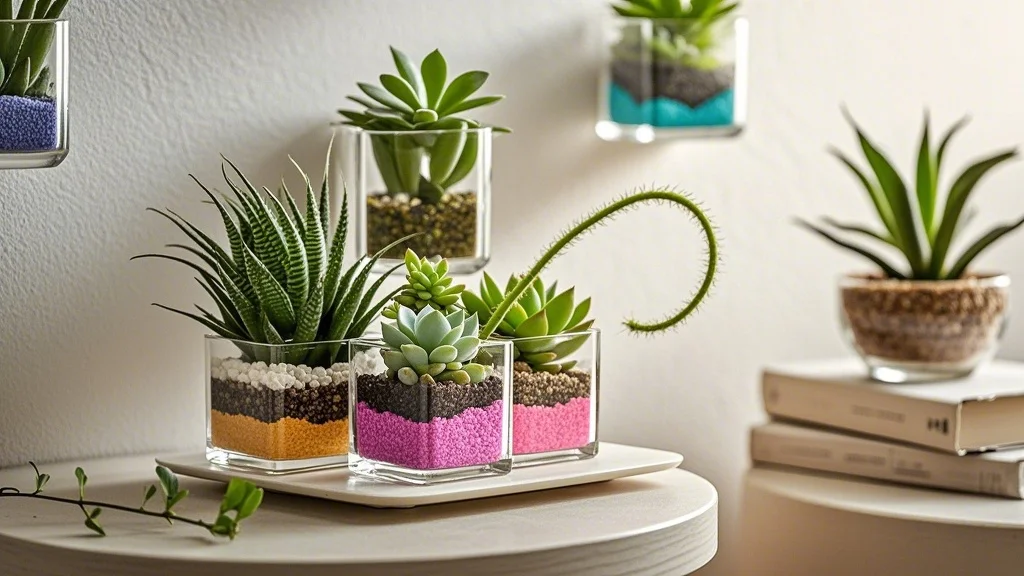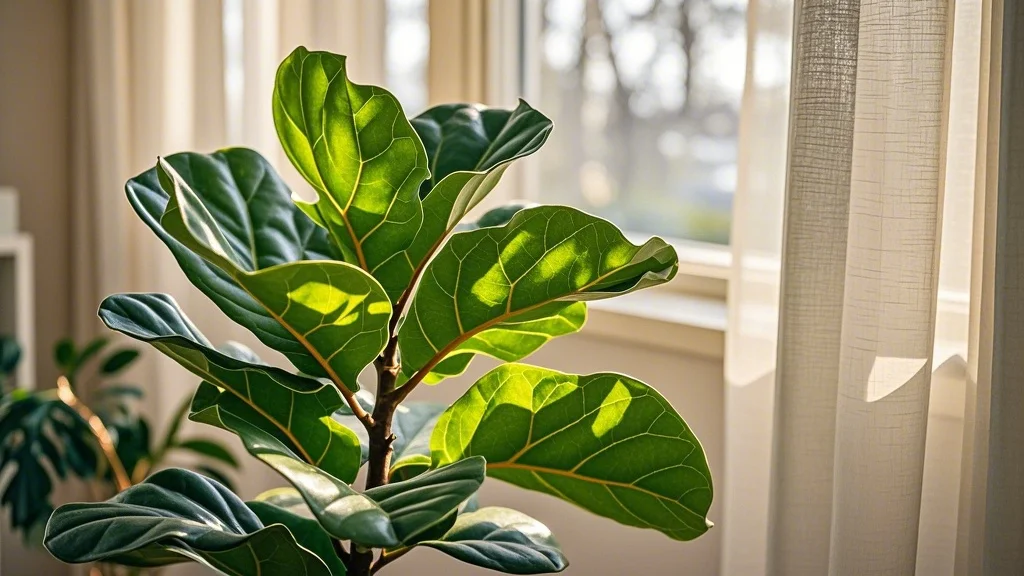If you’re new to the world of houseplants, the pothos (Epipremnum aureum) is the perfect place to start. Often called Devil’s Ivy or Golden Pothos, this versatile vine is renowned for its hardiness, adaptability, and forgiving nature. With its heart-shaped leaves and trailing vines, pothos adds an instant touch of greenery to any urban space while requiring minimal care. Whether you’re looking to brighten up your apartment, office, or any indoor space, pothos plants are an excellent choice for beginners and experienced plant parents alike.
This comprehensive guide will walk you through everything you need to know about pothos care, from basic requirements to propagation techniques and troubleshooting common issues. By the end, you’ll have all the knowledge needed to help your pothos thrive in your urban home.
Contents
- 1 Types of Pothos Varieties
- 2 Light Requirements
- 3 Watering Requirements
- 4 Soil and Potting
- 5 Fertilizing Your Pothos
- 6 Humidity and Temperature
- 7 Pruning and Maintenance
- 8 Propagation
- 9 Common Problems and Solutions
- 10 Toxicity Considerations
- 11 Styling Tips for Urban Spaces
- 12 Seasonal Care Adjustments
- 13 Conclusion
Types of Pothos Varieties

Before diving into care specifics, it’s worth knowing that pothos comes in several stunning varieties:
- Golden Pothos: The most common variety with green leaves featuring yellow variegation
- Marble Queen: Features highly variegated white and green leaves
- Neon Pothos: Bright, lime-green leaves that add a pop of color
- Jade Pothos: Solid green leaves with minimal variegation
- Pearls and Jade: Compact variety with white and gray-green variegation
- Manjula Pothos: Wide leaves with white, cream, and green variegation
- Cebu Blue: Silvery-blue, arrow-shaped leaves with a metallic sheen
Each variety has slightly different care needs, particularly regarding light requirements, but the basics remain consistent across all types.
Light Requirements
One of the reasons pothos is so popular among urban dwellers is its adaptability to various lighting conditions.
Ideal Light Conditions
Pothos thrives in medium to bright indirect light. A spot near an east or north-facing window is often perfect. While it can tolerate lower light conditions, the plant’s growth will be slower, and variegated varieties may lose some of their distinctive coloration.
Light Considerations by Variety
- Highly variegated varieties (Marble Queen, Manjula, Pearls and Jade): Require brighter indirect light to maintain their variegation
- Green varieties (Jade, Golden): Can tolerate lower light conditions
- Neon Pothos: Needs brighter light to maintain its vibrant color
Light Don’ts
Avoid placing your pothos in direct sunlight, as this can scorch the leaves. Similarly, extremely low light conditions (like a bathroom with no windows) will result in leggy growth and potential leaf loss over time.
Watering Requirements
Pothos plants are remarkably forgiving when it comes to watering, making them ideal for forgetful plant parents.
Watering Schedule
The general rule is to water your pothos when the top 1-2 inches of soil feels dry to the touch. This typically translates to:
- Every 7-10 days during growing season (spring and summer)
- Every 10-14 days during dormant season (fall and winter)
However, these are just guidelines. Always check the soil moisture before watering rather than sticking to a rigid schedule.
Signs of Improper Watering
Overwatering signs:
- Yellowing leaves throughout the plant
- Soggy, soft stems
- Moldy soil surface
- Root rot (blackened, mushy roots)
Underwatering signs:
- Wilting, drooping leaves
- Curling leaves
- Dry, crispy leaf edges
- Slow growth
Watering Tips
- Use room temperature water to avoid shocking the roots
- Water thoroughly until it drains from the bottom of the pot
- Empty the drainage tray promptly to prevent the plant sitting in water
- Consider bottom watering to encourage deeper root growth
- Reduce watering frequency during winter months when growth slows
Soil and Potting
The right soil mix is crucial for pothos health, providing both adequate drainage and nutrition.
Ideal Soil Mix
Pothos prefers a well-draining, aerated potting mix. You can use:
- Commercial potting mix designed for houseplants
- Or create your own mix with: 2 parts regular potting soil, 1 part perlite, and 1 part orchid bark
Potting Considerations
- Always use containers with drainage holes
- Choose a pot that’s 1-2 inches larger than the current one when repotting
- Terracotta pots work well as they allow soil to dry more evenly
- Hanging baskets showcase the trailing vines beautifully
Repotting
Repot your pothos every 1-2 years, or when:
- Roots are visibly growing through drainage holes
- Growth has slowed significantly
- The plant has become top-heavy
- Water runs straight through the pot without being absorbed
Spring is the ideal time for repotting, as the plant is entering its active growth phase.
Fertilizing Your Pothos
Pothos isn’t a heavy feeder, but some fertilization will help maintain healthy growth, especially in an apartment setting where nutrients may be limited.
Fertilizer Type and Schedule
- Use a balanced, water-soluble houseplant fertilizer (like a 10-10-10 NPK)
- Fertilize once a month during the growing season (spring and summer)
- Dilute to half the recommended strength to avoid fertilizer burn
- Skip fertilizing during fall and winter when growth naturally slows
Signs of Fertilizer Issues
Over-fertilization:
- White crust on soil surface
- Leaf burn (brown edges)
- Wilting despite adequate watering
Under-fertilization:
- Pale, smaller new leaves
- Slow or stunted growth
- Overall lackluster appearance
Humidity and Temperature
As tropical plants, pothos appreciates some humidity, though they’re more tolerant of dry air than many other tropical houseplants.
Humidity Preferences
- Thrives in moderate humidity (40-60%)
- Can tolerate average indoor humidity levels
- Benefits from occasional misting, especially in dry winter months
- Consider a humidifier if your apartment is particularly dry
Temperature Range
- Ideal temperature: 65-85°F (18-29°C)
- Can tolerate brief periods down to 50°F (10°C)
- Avoid cold drafts from windows, doors, or air conditioners
- Keep away from heating vents that can dry out the plant
Pruning and Maintenance
Regular pruning helps maintain your pothos’ appearance and encourages fuller growth.
Pruning Techniques
- Use clean, sharp scissors or pruning shears
- Cut just above a leaf node (the small bump where leaves emerge)
- Remove yellowing or damaged leaves at the base of the stem
- Trim leggy vines to encourage bushier growth
- Save healthy cuttings for propagation
General Maintenance
- Dust leaves regularly with a damp cloth to keep them clean and photosynthesizing efficiently
- Rotate the plant quarterly to ensure even growth
- Check occasionally for pests, especially on the undersides of leaves
Propagation

One of the most rewarding aspects of pothos care is how easily they propagate, allowing you to expand your collection or share with friends.
Water Propagation
- Cut a 4-6 inch section of healthy vine, ensuring it has 3-4 leaves
- Remove the lowest leaf to expose the node
- Place the cutting in a clear container with water, ensuring the node is submerged
- Position in bright, indirect light
- Change the water weekly to prevent bacteria growth
- Roots should appear within 2-3 weeks
- Once roots are 1-2 inches long, transfer to soil
Soil Propagation
- Prepare a cutting as described above
- Dip the cut end in rooting hormone (optional but helpful)
- Plant directly into moist potting mix, ensuring the node is buried
- Cover with a clear plastic bag to create a humid environment
- Remove the bag for a few hours daily for air circulation
- Roots should establish in 3-4 weeks
Propagation Tips
- Spring and summer are the best times for propagation
- Multiple cuttings planted together create a fuller-looking plant
- Be patient—some varieties root faster than others
Common Problems and Solutions
Even the hardiest plants occasionally face challenges. Here’s how to identify and address common pothos problems.
Pest Issues
Spider Mites
- Signs: Fine webbing, stippled leaves, tiny moving dots
- Solution: Wipe leaves with insecticidal soap, increase humidity
Mealybugs
- Signs: White, cotton-like clusters in leaf joints
- Solution: Remove with alcohol-dipped cotton swab, treat with neem oil
Scale
- Signs: Brown bumps on stems and leaves
- Solution: Scrape off gently, apply horticultural oil
Disease Issues
Root Rot
- Signs: Yellowing leaves, black mushy roots, foul smell
- Solution: Remove affected roots, repot in fresh soil, reduce watering
Bacterial Leaf Spot
- Signs: Water-soaked spots that turn yellow, then brown
- Solution: Remove affected leaves, improve air circulation, avoid overhead watering
Environmental Issues
Leaf Yellowing
- Cause: Usually overwatering, but can also be natural aging
- Solution: Adjust watering schedule, remove old leaves
Brown Leaf Tips
- Cause: Low humidity, fertilizer burn, or mineral buildup from tap water
- Solution: Increase humidity, flush soil occasionally, use filtered water
Leggy Growth
- Cause: Insufficient light
- Solution: Move to brighter location, prune to encourage bushier growth
Toxicity Considerations
It’s important to note that pothos plants are toxic if ingested. They contain calcium oxalate crystals that can cause:
- Irritation and swelling of mouth, tongue, and throat
- Vomiting and difficulty swallowing
- Skin irritation from sap contact
Keep pothos out of reach of children and pets, particularly cats who may be attracted to the dangling vines.
Styling Tips for Urban Spaces
Pothos is incredibly versatile when it comes to styling your urban apartment:
- Hanging baskets: Showcase the trailing vines in kitchens or near windows
- Bookshelf accent: Train vines along shelving for a living decoration
- Wall climbers: With support, pothos can climb walls creating a living feature
- Bathroom greenery: Thrives in bathroom humidity if some light is available
- Propagation station: Display cuttings in decorative glass containers
Seasonal Care Adjustments
Adjust your care routine slightly throughout the year for optimal growth:
Spring/Summer (Growing Season)
- Increase watering frequency as needed
- Apply regular fertilization
- Monitor for faster growth and repot if necessary
- Ideal time for propagation
Fall/Winter (Dormant Season)
- Reduce watering frequency
- Stop fertilizing
- Move away from cold windows
- Expect slower growth and fewer new leaves
Conclusion
The pothos plant truly earns its reputation as one of the best houseplants for beginners. Its forgiving nature, adaptability to various conditions, and striking appearance make it perfect for urban gardeners just starting their plant journey. With the care guidelines outlined in this guide, you’re well-equipped to help your pothos not just survive but thrive in your home.
Remember that plant care is often about observation and adjustment. Pay attention to how your pothos responds to its environment, and don’t be afraid to make changes to your care routine accordingly. Before long, you’ll be rewarded with a lush, trailing beauty that brings life and vibrancy to your urban space.
Whether you’re growing a single Golden Pothos or starting a collection of different varieties, these resilient plants offer the perfect introduction to the rewarding world of indoor gardening. Happy growing!








